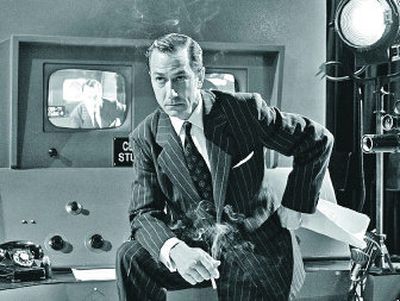Sex, violence, and now smoking

WASHINGTON – Would “Casablanca” have been rated XXX?
Depictions of smoking in movies will now be a factor when deciding what a film’s rating will be, possibly making a PG-13 movie R-rated, the Motion Picture Association of America said Thursday. The policy affects only new movies.
Along with violence, depictions of sex, adult language and other content considerations, ratings organizations will examine new releases to determine if they glamorize smoking or if it is pervasive through the films, even among adults. Underage smoking has always been considered when rating a film.
“Clearly, smoking is increasingly an unacceptable behavior in our society,” Dan Glickman, chairman of the motion picture association, said in a statement. “There is broad awareness of smoking as a unique public health concern due to nicotine’s highly addictive nature, and no parent wants their child to take up the habit.”
A number of groups have called for almost all movies that depict smoking to automatically receive an R rating, a plan the movie studios oppose. Children under 17 are not allowed in R-rated films unless they are with an adult.
Cigarettes were once an indispensable movie prop – something for actors to do with their hands and to establish character traits, such as “edgy” and “rebellious.” Sex symbols such as Humphrey Bogart and Bette Davis helped make smoking seem sophisticated. A leading man was not a gentleman unless he lit a lady’s cigarette.
But in recent years, public policy and sentiment have turned against smoking, as its health hazards have become plain. The motion picture association’s policy is the latest move against smoking, following the multibillion-dollar settlement with the tobacco industry in 1998.
Tobacco industry giant Philip Morris USA said Thursday it supported the new policy and has for years refused requests to use company products in films.
The new policy for the movies allows for mitigating circumstances in which smoking may not affect a rating, the trade group said. For instance, the rating on historical films – such as 2005’s “Good Night, and Good Luck,” set in 1953, when indoor smoking seemingly was required by law – would not be affected.
Foreign films will also fall under the new ratings criteria. New versions of French art films, such as the 1960 classic “Breathless,” in which even the main character’s dying breath is seen in a puff of smoke, could be particularly hard hit.
The movie ratings system was put in place by former motion picture association chairman Jack Valenti in 1968 to head off threats of federal regulation in response to rising public concern over violent and sexual images in films.
Today, groups such as the American Legacy Foundation – created as a result of the 1998 tobacco settlement – the American Medical Association and the World Health Organization have called for films with smoking to receive an automatic R rating unless the smoking is historically necessary or portrayed in an unfavorable fashion.
The foundation called the new policy “wholly inadequate” because it falls short of slapping an automatic R on films that contain smoking.
In a March interview on National Public Radio, Stanton Glantz, a University of California at San Francisco professor of medicine who started the Smoke Free Movies campaign, said research shows that children who see a great deal of smoking in movies are three times more likely to start smoking than children who do not.
Over a recent two-year period, the number of new films that included even a fleeting image of smoking dropped from 60 percent to 52 percent, reports an MPAA study, and 75 percent of those films already received an R rating for content other than smoking.
Christopher Buckley’s 1994 satirical novel, “Thank You for Smoking,” follows a tobacco lobbyist’s efforts to counter the anti-smoking tide by encouraging Hollywood to include more smoking in movies. The film version of Buckley’s book depicts no smoking.
Of the policy, Buckley wrote by e-mail: “I can only hope this means that the MPAA will strip such films as ‘Casablanca,’ ‘To Have and Have Not’ and ‘Sunset Boulevard’ of their G-ratings and re-label them for what they were: insidious works of pro-smoking propaganda that led to millions of uncounted deaths. Bravo.”